Japanese Garden in Your Hands
楽庭-JAPAN-
A Japanese garden with wishes for longevity, prosperity of offspring, and family safety.
A Japanese garden that is a place to convey the spirit of exquisite hospitality.
Japanese Garden, a place where people gather and connect with each other.
A Japanese garden that has refined the value of space since ancient times.
A Japanese garden where the gods of the Yaoyorozuno-kami (countless gods) dwell in the details.
Here in Izumo, Japan, there is the Izumo-style garden, a garden that the ancient people have revered and that we have inherited and nurtured.
We would like to bring the Izumostyle garden, which brings good luck and brings good fortune, to a wider audience.
With this in mind, we have developed an assembled garden that can be set up anywhere, while maintaining the authentic layout and materials.
It can be placed anywhere in the room, regardless of lifestyle, experience, or skill.
We are proud to present a new authentic assembled Japanese garden, “Rakutei”.
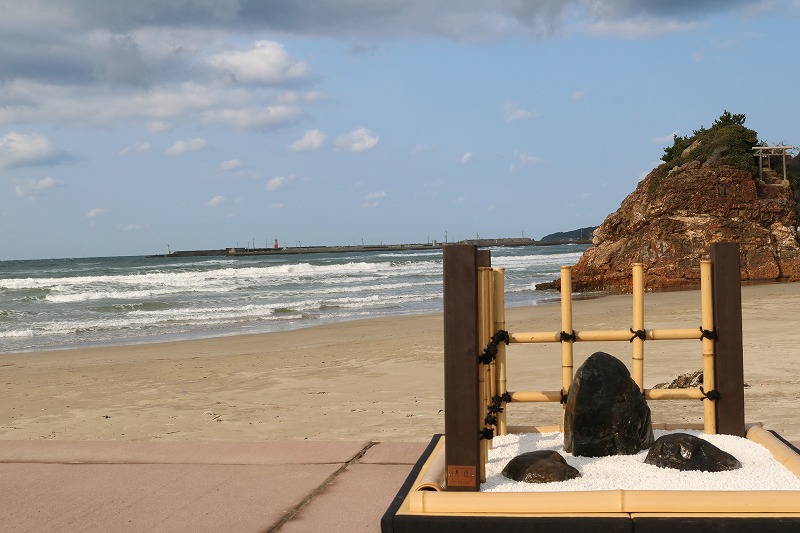
Quality assembling style Japanese garden “Rakutei”


Normally Japanese gardens are built over a large area using large stones and many garden trees. Rakutei, however, has made this Japanese garden small enough to fit on a desk and can be assembled by anyone. In other words, anyone can easily create a real Japanese garden without any difficult skills. It takes only about 20 minutes to create. No special tools are required. Furthermore, the assembled Rakutei can be easily disassembled and placed in a special box for easy transportation. Its standard size is 90cm (length) x 90cm (width) x 55cm(height).
Rakutei can be readily hand-assembled because it is pre-crafted by Japanese garden craftsmen. Sophisticated bamboo fences, which normally require difficult skills to create, can be completed by simply inserting columns into the base and combining pre-cut bamboo materials. In addition, the bottom parts of landscape stones are pre-cut so that they present the best shape. Thus, you can create the best looking and well-balanced garden simply by placing the landscape stones in designated positions. Stone lanterns are dug out of large stones by stonemasons, and simply by assembling each component in turn from the bottom up, you can create a magnificent lantern. The stone lanterns are pre-processed for this easy assembly, so you can assemble your Rakutei with confidence.
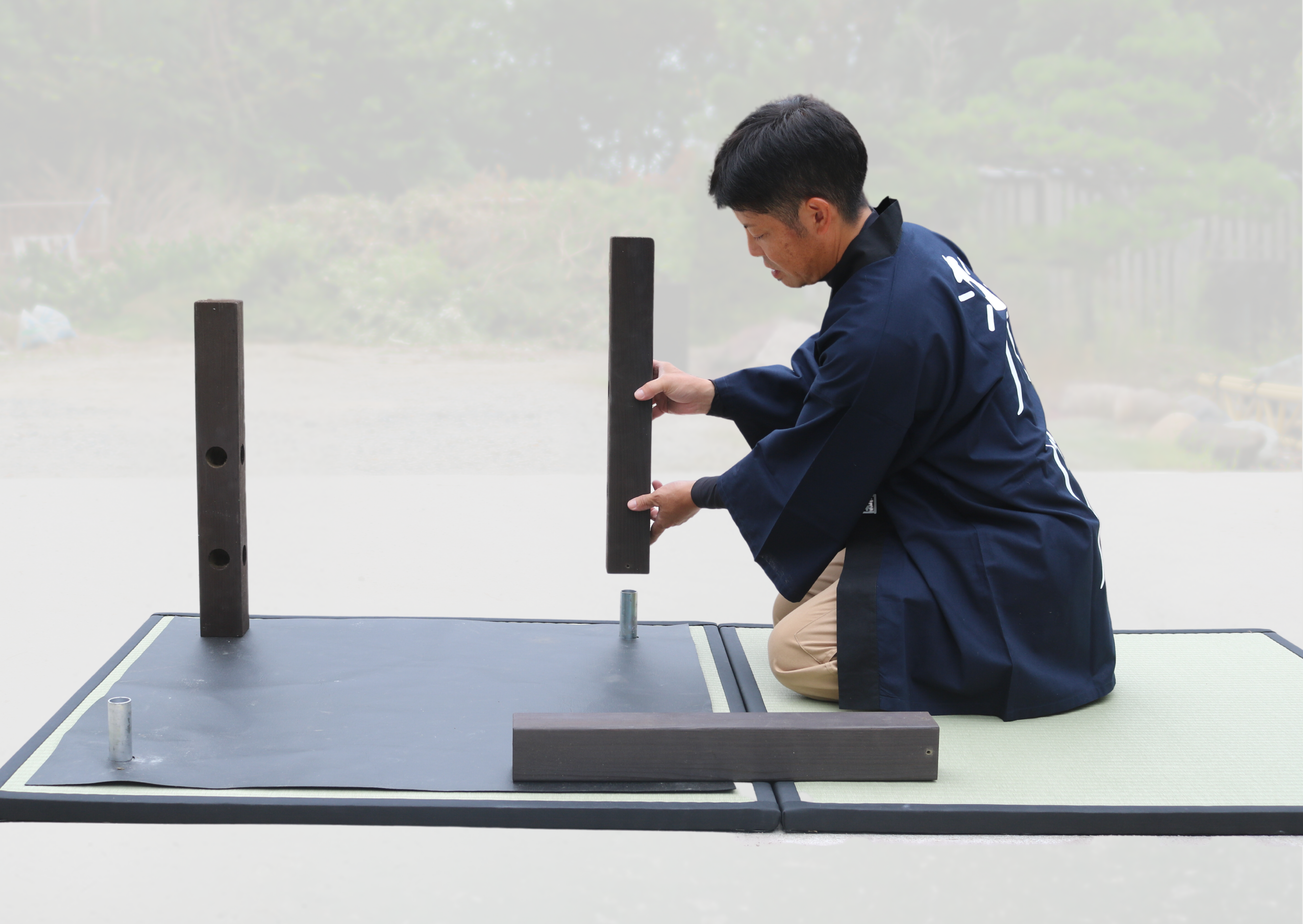
In addition, the image of the garden as a whole can be very different depending on the location of the landscape stones that are often used in the garden. In Japan, research has been conducted since ancient times to create beautiful Japanese gardens. The techniques have been passed down to the present day. Rakutei describes these techniques as “Rakutei’s commitment”. Now anyone can enjoy an authentic Japanese garden.
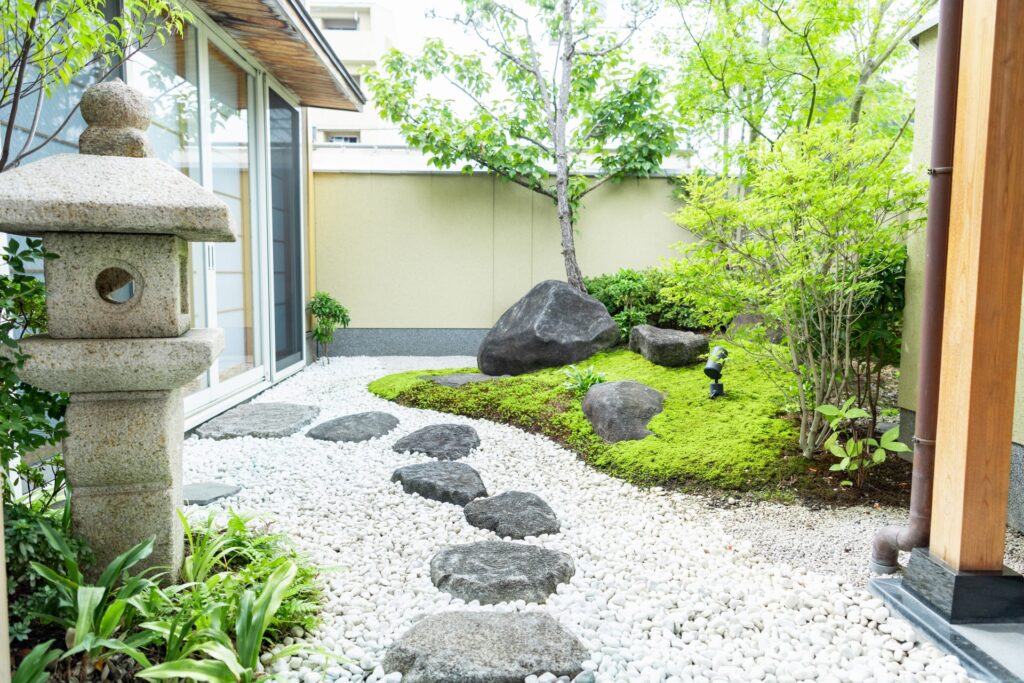
Izumo-style garden, a traditional Japanese garden in the Izumo region of Shimane Prefecture
Japanese gardens have been developed with the backdrop of Japanese history and culture and are recognized worldwide as beautiful gardens. The prayers and thoughts of the Japanese people are imbued in the design of Japanese gardens. Particularly, Japanese gardens in the Izumo region of Shimane Prefecture, which is famous as a sacred place of mythology, are called Izumo-style gardens because of the development by the unique history and culture of the Izumo region.
Izumo City in Shimane Prefecture is known as one of the most famous places in Japan. The reason for this is that the name Izumo appears many times in the myths that tell the history of the creation of Japan, and the region is essential to the story of Japan’s origin. There is also evidence that Izumo is treated as a special region in Japan. The best example of that is the Izumo region gives a special name to the month of October.



The Japanese believe that gods reside in mountains, rivers, trees, rocks, animals, plants, and everything else in nature. They also worship heroes and mythical beings as gods.
The numerous gods present throughout Japan are called Yaorozuno-kami, meaning “there are countless gods.” According to Japanese mythology, every year in October, the Yaorozuno-kami gather in Izumo to hold a meeting for world peace and matchmaking. Because of this, the gods are absent from the whole country, and October is called Kanna-zuki, meaning “the month of no gods.” However, in the Izumo region, the Yaorozuno-kami gather from all over Japan, and October is called Kamiari-zuki, meaning “the month of the gods.” This is a well-known story taught in school textbooks. This is one of the proofs that the Izumo region is treated as a special place in Japan. In particular, the Izumo region is visited by many Japanese people every year as the home of mythology, as a sacred and divine place, and as a place that brings good luck in marriage.
In the Izumo region, thousands of gardens with similar layouts were created simultaneously in the 1900s. This is a phenomenon unparalleled in Japanese gardens throughout Japan. What is surprising is that this garden style was not taught by a single gardener, but many gardeners created gardens with the same layout. It is still a mystery to this day that there is no textbook to teach the techniques of the garden making, and that the techniques have been handed down in an unrhymed manner, and are still under study. The history and design of Izumo-style gardens can be confirmed through books and presentations by garden researchers. In addition, Izumo City in Shimane Prefecture has preserved this exceptional garden style as a cultural asset.


Rakutei hands down the rare Izumo-style Japanese garden to the present day.
Commitment to Materials and Quality
The main materials used in Rakutei are genuine natural materials. The same materials used in Japanese gardens, such as landscape stones and bamboo fences, are also used in Rakutei. However, they are more ingenious than those used in ordinary Japanese gardens and are designed to be easy to use in an assembly style Japanese garden.
We select the most suitable landscape stones from many natural stones based on their texture, color, and shape. The most important aspect of landscape stone is the compatibility with other stones used. Without a sense of unity of the stones, the garden will look scattered and disjointed. Japanese garden is the art of integrating the individuality of each stone to create a cohesive design for the garden as a whole. For Rakutei, our skilled garden craftsmen select the best combination of stones from many stones. When installing landscape stones in the garden, the ground is dug out and adjusted so that the stones are at just the right height and angle. The height and angle of the stones are determined by the sharp sense of a skilled garden craftsman. The landscape stones for Rakutei have been cut and processed in advance by skilled garden craftsmen so that they are at the optimum height and angle. Therefore, no matter who installs the stones, the height and angle will always be optimal. The skill of finding meaning and value in the combination of natural stones is the true appeal of Japanese gardens. Rakutei’s landscape stones are ingeniously designed in a way that anyone can use this technique.

Rakutei is surrounded by a bamboo fence. Bamboo fences are an essential traditional technique for Japanese gardens. A bamboo fence means a boundary. The bamboo fence also serves as a backdrop for the Japanese garden, making the Japanese garden stand out even more. Bamboo fences are made by tying bamboo in a special way. The bamboos for Rakutei are crafted in such a way that it is easy to assemble. Therefore, there is no need to make difficult knots to tie the bamboo.
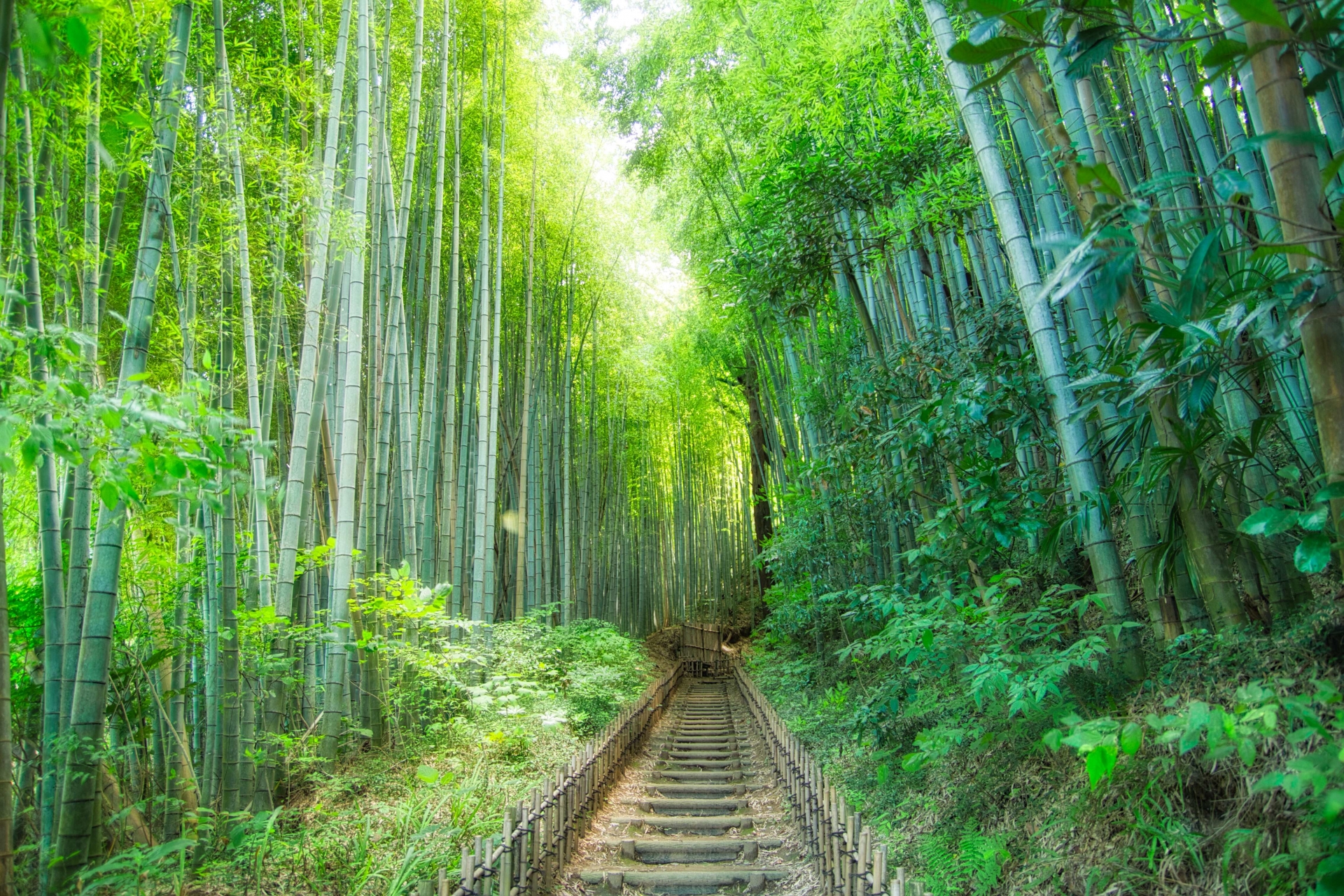
Bamboos used for the fences in Japanese gardens are not designed to be durable. However, the bamboos for Rakutei have been treated to maintain its quality over a long period of time. The first step in the bamboo treatment is to straighten natural bamboo by applying heat. Since natural bamboo is usually slightly bent, straightening is necessary to make the finished product look beautiful. The surface is then thoroughly polished. Next, the bamboo is dried to remove the moisture inside. Then, the bamboo is treated with chemicals to prevent mold and insect damage. Since round bamboo will crack if left as it is, a slit is made on the back of the bamboo. In this way, bamboo craftsmen have devised techniques to ensure that real bamboo materials will last for a long time. The best method of applying chemicals to prevent mold and insect damage is adopted based on numerous research and data.
The bamboo fence is pre-cut to the optimum length and can be simply inserted to holes in props. The wood used for the props is cored to prevent cracking. In addition, insect repellents are injected, and a protective coating is applied to ensure long-term use. In addition, we do not use nails or screws for assembly.
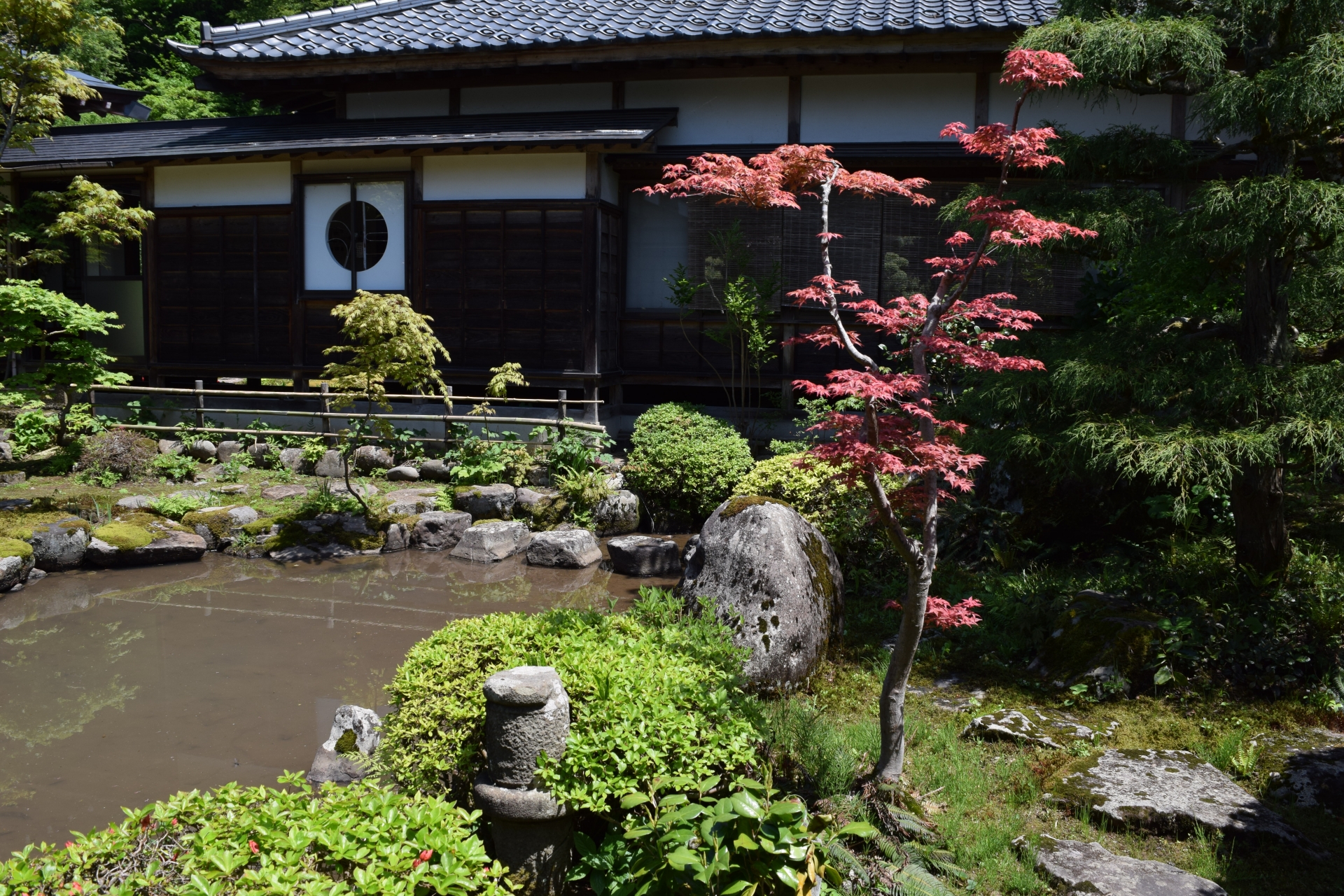
The lanterns are made of real stone. They are made by processing Kimachi stones, which are produced only in the Izumo region of Shimane Prefecture. Kimachi stone is a sandstone formed when volcanic deposits piled up on the ocean floor 14 million years ago. It was used for stone chambers and sarcophagi in ancient burial mounds around the 5th century (mid-Kofun period). The high-quality stone was called “Otome stone” during the Edo period (1603-1867) which could not be sold outside the domain without the domain’s permission. In the late Edo period, various stone products such as building materials, stone lanterns, Komainu (stone guardian dogs), and Izumo lion dogs were actively transported to various parts of the country by the Japan Sea route and overland routes. Stone lanterns are popularly known as Izumo lanterns, and in recent years they are exported around the world. Kimachi stone is a sandstone, which makes it easy to process and highly valuable for its subdued color.
Magnificent lanterns are made by piling stones in a certain sequence. Each part of the lantern is handmade by skilled craftsmen. Therefore, it takes a lot of time to make a single lantern. The number of craftsmen who make lanterns is very few in recent years. Lanterns made of Kimachi stone are called Izumo lanterns, and the few remaining Izumo lantern craftsmen carefully create each lantern for Rakutei.
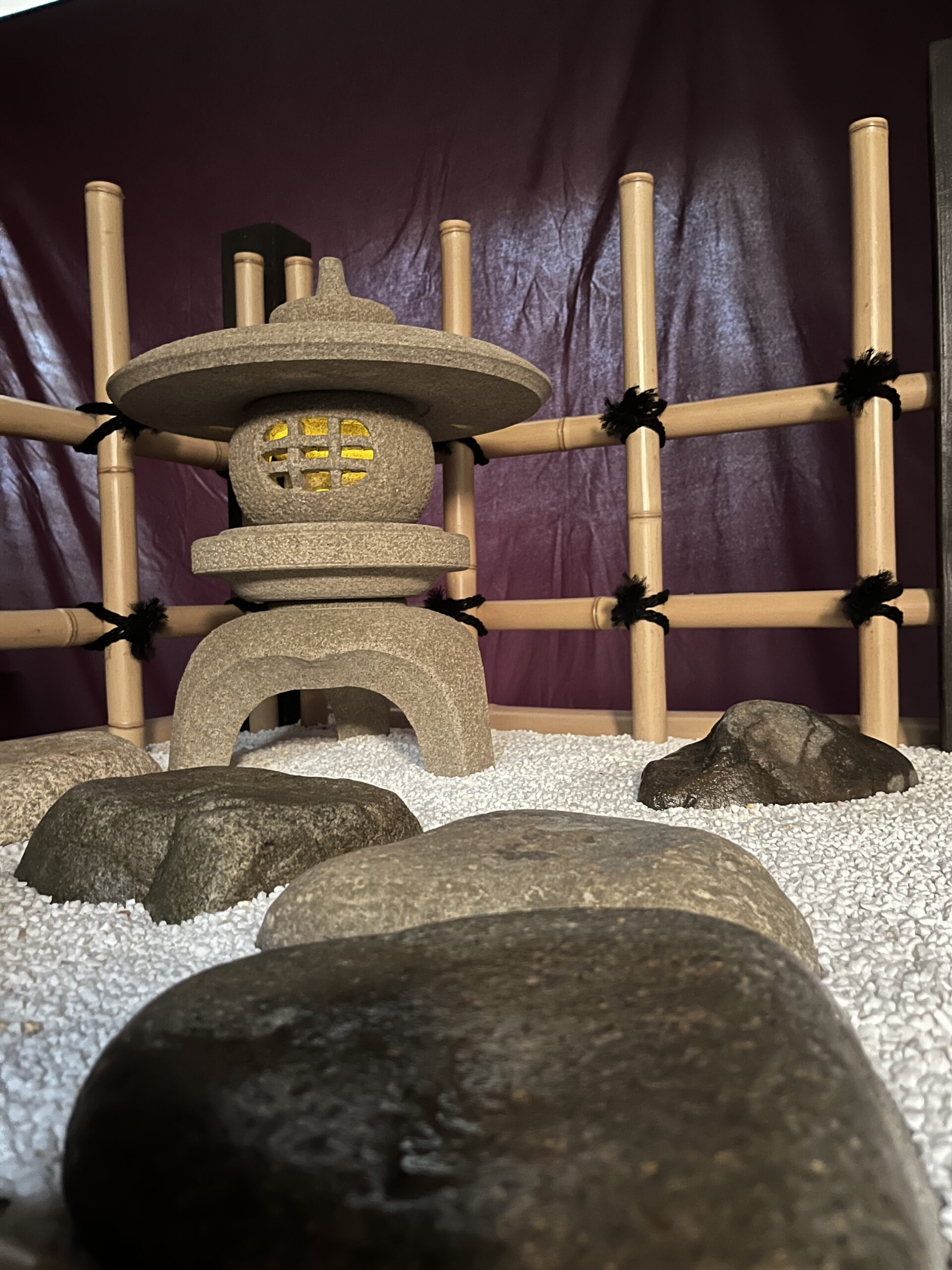
Take care of it and enjoy it.
It is also important to maintain Japanese gardens to always keep them beautiful. It is because of this care that Japanese gardens are said to be more beautiful after decades or centuries than when they are just completed. However, for Rakutei, there is no need to pick up fallen leaves or water the garden. Basically, no maintenance is required, but maintenance of gravel for enjoyment is possible. Gravel represents the ocean or a river. In Japanese gardens, wave patterns called “Samon” are often drawn on gravel. In some temples of certain religious sects, drawing Samon on the gravel in the garden is a part of the training. Raking the gravel to create Samon calms the mind. Rakutei uses fine and beautiful gravel suitable for Samon.
Lanterns can be lit to savor the evening view. Visitors can enjoy drinks and conversation while looking at the Japanese garden lit by the lantern light.
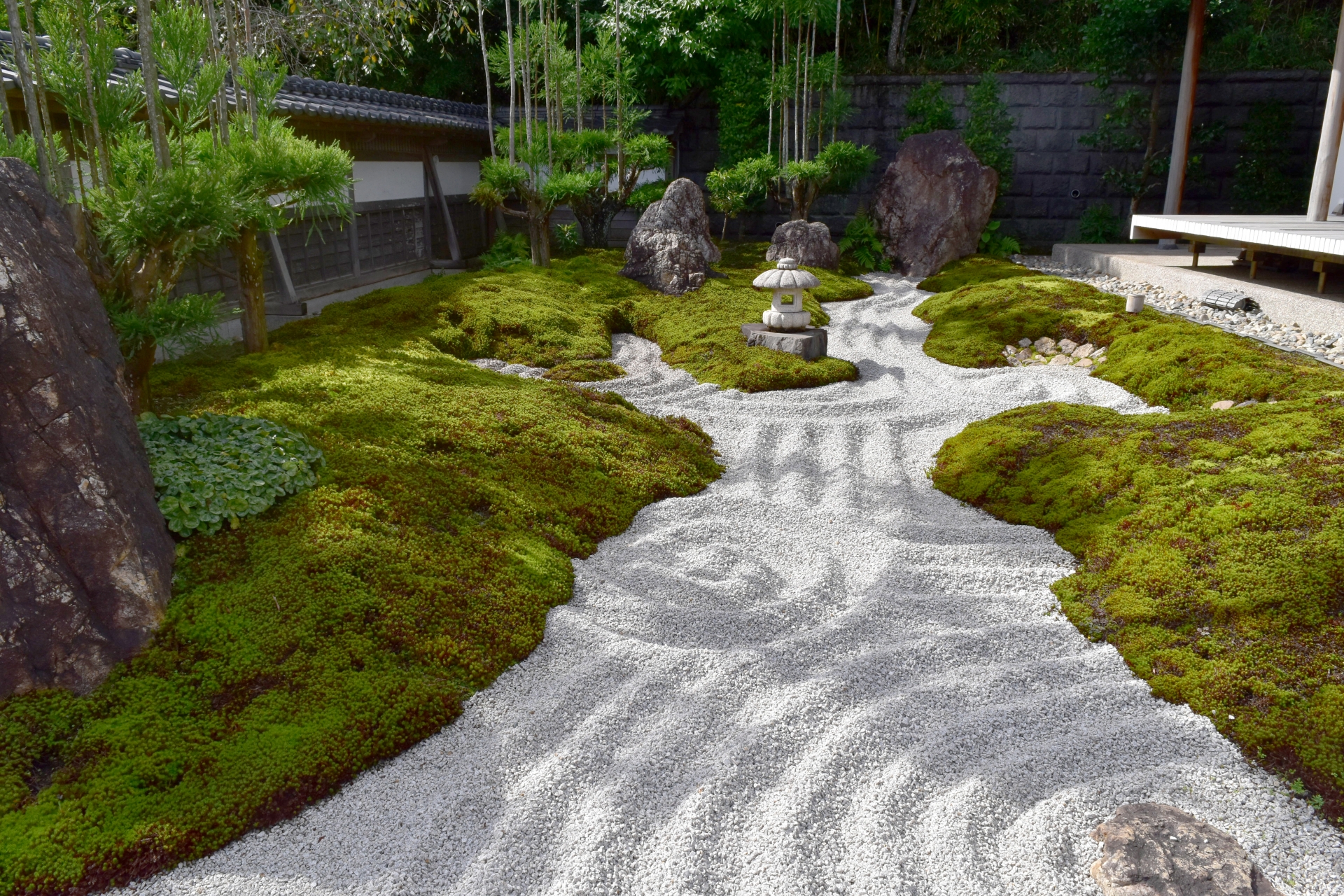
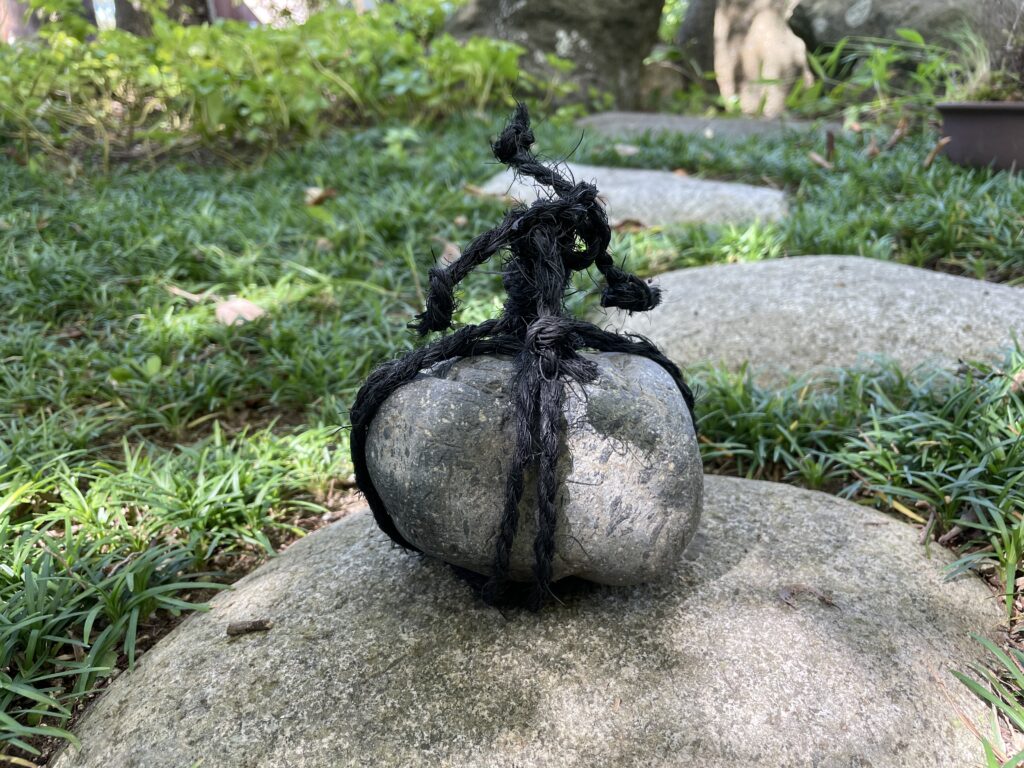
In addition, there are options available for the Rakutei. We plan to release many more options in the future. With options, you can enjoy Rakutei more and customize it in your own way.
For example, you can add new stones to create more luxurious garden or reshape it into a garden of your own liking. You can also place “Sekimori stones” (barrier stone) to incorporate the unique mannerisms of Japanese garden. Japanese gardens do not have a no-entry sign that says the public is not allowed to enter. Instead, a Sekimori stone is placed in the garden. The stone is a round stone about the size of a fist, neatly bound with hemp-palm rope. When this stone is placed, it means that entry is prohibited from this point. At first glance, it is difficult to understand, but the stone is placed in such a way as not to ruin the image of the entire garden. Therefore, visitors are not allowed to stepover the stone in the Japanese garden. Even in Rakutei, you can adopt the manner of Japanese garden by placing Sekimori stone.
Other options for props, such as hand brooms and shovels, will also be available soon. We are also developing options to incorporate plants into Rakutei.
Rakutei can not only be assembled and viewed, but also be used to enjoy and customized.

